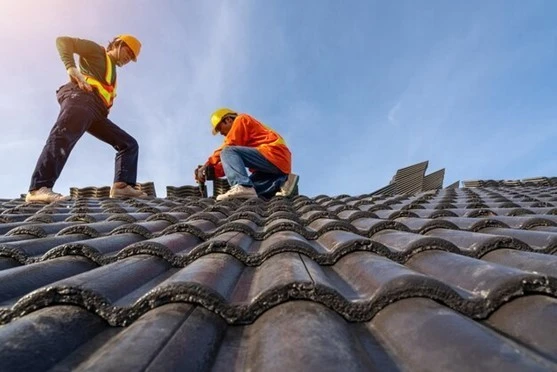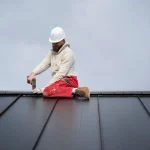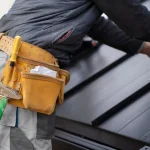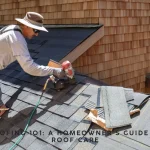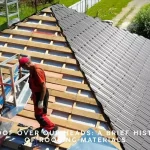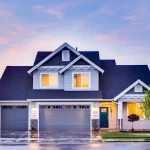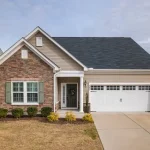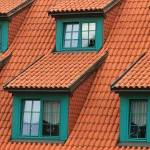Roof problems can cause serious trouble for commercial properties. Whether you own a retail store, manage a school, or run an office building, the roof is one of the most vital parts of the structure. It protects your business, equipment, and the people inside from harsh weather. Roof problems can disrupt your daily business activities and result in expensive repair bills.
Repairs can be expensive, especially if the damage is severe or left unattended for too long. Many Maui roofing contractors warn that even minor problems like tiny leaks or cracks can quickly become huge issues if not fixed on time. These can lead to water damage, mould, or even structural issues that put the safety of the building at risk.
That’s why it’s essential to deal with any signs of wear and tear as soon as you notice them—especially those caused by storms, heavy rain, snow, heat, or the natural ageing of roofing materials. Taking quick action helps reduce damage, saves money in the long run, and keeps your building safe and functional.
Common Roofing Problems
Businesses, schools, retail stores, and government buildings all have one thing in common—a large roof area. The more roof space you have, the more likely you’ll face roofing issues. Many people don’t notice problems until the damage becomes obvious, it’s better to take a proactive approach.
Here are some roofing problems that can often be prevented if caught early:
Leaks and Water Damage
Leaks rank among the most frequent problems found in roofing. They can be caused by cracked flashing, broken shingles, or missing parts. Water damage can be serious, especially if it goes unnoticed. It can spread and lead to mould, mildew, and stains on walls or ceilings. These issues not only damage the building but can also be a health risk.
Poor Installation
If your roof isn’t installed properly, you’ll probably face problems later. Bad installation often happens due to low-quality materials or unskilled workers. A poorly installed roof can become unsafe and break building rules, leading to fines.
Good roof installation should include proper ventilation, drainage, and insulation. Hiring a licensed, experienced roofing contractor can make sure your roof is installed the right way and meets all safety codes.
Ageing and Material Damage
Even the best roofing materials break down over time. Most roofs are made from asphalt or metal, which can wear out due to weather and age. Some of the damage you might see includes:
- Cracks: Constant sunlight can cause materials to warp and crack, especially flashing.
- Rust: Metal roofs of steel or aluminium can rust when exposed to harsh weather.
- Blistering: When moisture gets trapped, shingles swell and shrink, creating bubbles or blisters.
- Breakage: Shingles can crack or fall off during storms or strong winds.
- Shrinkage: Some materials, like rubber, shrink over time due to temperature changes.
In addition to weather, UV rays, pollution, and extreme heat or cold can weaken roofing materials. While ageing is natural, choosing strong, wind- and impact-resistant materials and having them installed by experts can help your roof last longer.
Poor Drainage
A faulty or blocked drainage system can cause major issues. Gutters are meant to direct water away from the roof. When they get clogged, water can collect and seep into the tops or walls, leading to mould, mildew, and even damage to the building’s structure.
Leaves, branches, and dirt are the main reasons gutters get clogged. To prevent blockages, it’s essential to inspect and clean your gutters regularly. You can also add gutter guards to stop big debris from getting inside.
Storm and Hail Damage
Bad weather, like storms, snow, or hai,l can damage shingles, tiles, and the layers beneath. Once snow or ice melts, the water can get under the roof’s surface and cause leaks or stains. Water running down your walls could be a warning that your roof is leaking.
Melting snow that refreezes can force its way under shingles and cause them to break. Over time, this pressure can cause sagging or even collapse. Using high-quality materials and having your roof built by professionals can help avoid this damage.
Why Roof Inspections and Maintenance Matter?
Regular roof inspections are a key part of building maintenance. A roofing expert can check the condition of your roof and suggest repairs before things get worse. Here are a few good reasons to schedule routine inspections:
- Checking for leaks: If you notice stains or moisture after heavy rain, an inspection can confirm if there’s a leak.
- Looking for storm damage: After a storm, a professional can find and fix broken or missing shingles before they lead to bigger problems.
- Monitoring ageing: Roofs naturally age, and regular inspections help track wear and tear so you know when repairs are needed.
- Helping with insurance claims: If your roof is insured, a roofer can provide an inspection report and repair estimate for your insurance company.
Along with inspections, regular maintenance can protect your roof and save money over time. It’s often cheaper to fix a small problem than to wait until it becomes a bigger one.
Here are some benefits of keeping your roof well-maintained:
- Saving time and money: Fixing small problems early can prevent costly repairs later. Regular checks can catch problems early.
- Extending your roof’s life: A well-maintained roof lasts longer and needs fewer major repairs.
- Preventing emergencies: Maintenance reduces the risk of sudden leaks or collapses, especially during storms or harsh weather.
- Protecting your property: A healthy roof helps keep your entire building safe, dry, and in good condition.
Conclusion
A sturdy roof is crucial for keeping your commercial property safe and secure. From preventing leaks to managing storm damage, taking care of your roof now can save you from costly repairs later. Regular inspections and maintenance help detect issues early and extend the life of your roof.
Whether you own a small business or manage a large building, investing in quality roofing services and materials is one of the smartest things you can do.

